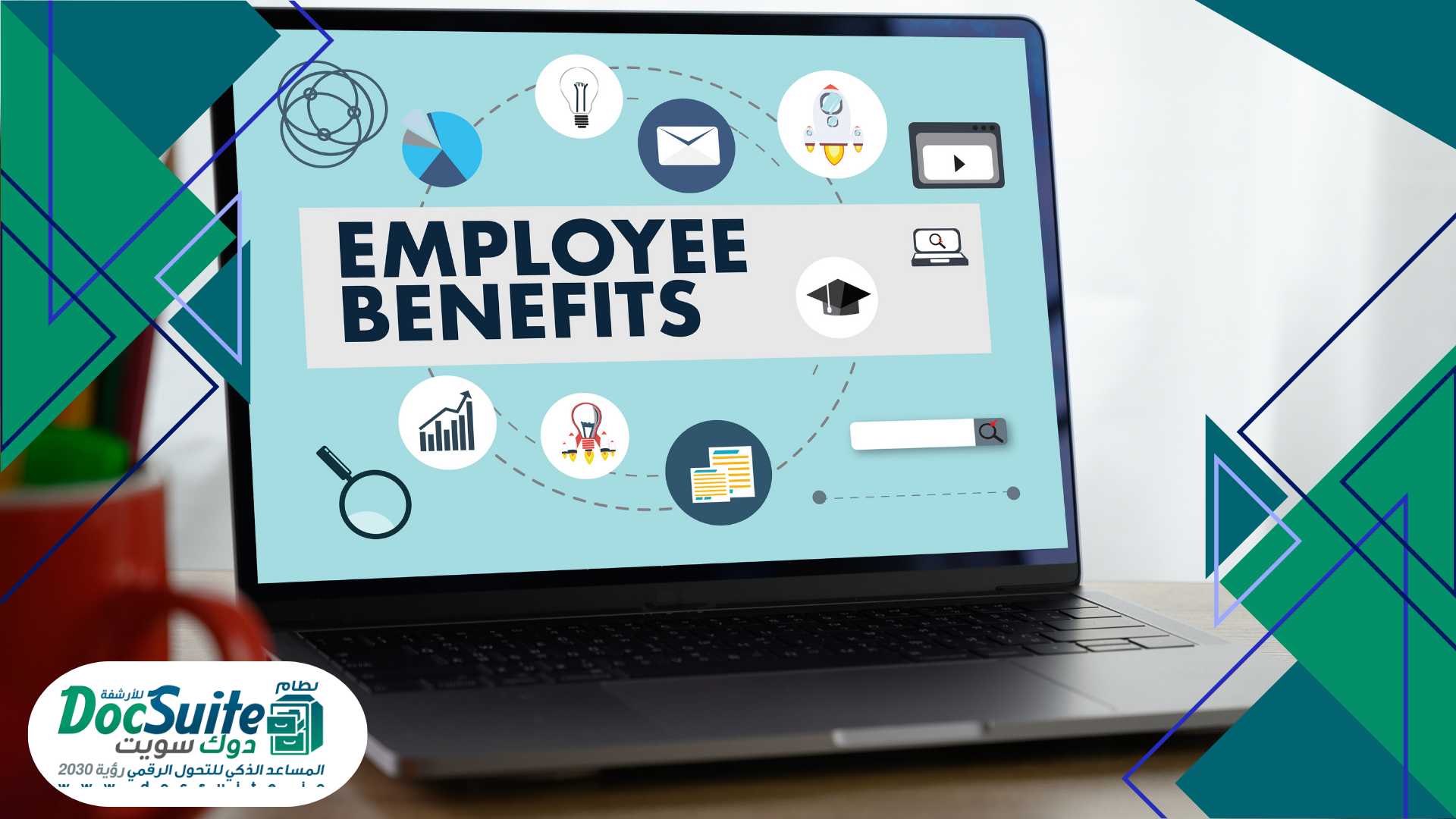Human Resources (HR) management is a fundamental pillar in any organization, playing a vital role in hiring, training, and motivating employees. One of the most important tools that enhance HR effectiveness is the compensation and benefits offered to employees. These tools are not only a means of appreciating employees' efforts but also a motivation to boost productivity and job commitment. By providing competitive compensation and attractive benefits, companies can attract and retain exceptional talents, leading to improved overall organizational performance. In this article, we will discuss how compensation and benefits can enhance HR effectiveness by examining the importance of these tools and their impact on employee satisfaction and productivity.
What are Compensation and Benefits?
Compensation includes any type of payment or reward that an employee receives for their work, such as base salary, bonuses, commissions, travel allowances, meals provided at work, and housing allowances. Benefits, on the other hand, include non-cash advantages offered by the company to employees, such as health insurance, life insurance, retirement programs, paid leave, training and development opportunities, childcare services, and entertainment services.
How Compensation and Benefits Programs Motivate Employees to Give Their Best
Compensation and benefits programs are a crucial part of any institution's strategy aimed at achieving success and sustainability. These programs not only help in attracting talents but also serve as an effective means to motivate employees to give their best and achieve outstanding performance. Here are some ways how compensation and benefits programs encourage employees to excel:
Recognition and Appreciation:
When employees feel that their efforts are valued and recognized through attractive compensation and benefits, it enhances their sense of accomplishment and belonging. Both material and moral recognition of their efforts encourages them to continue being dedicated and hardworking.
Performance Motivation:
Compensation and benefits programs that include financial incentives, such as monetary rewards and annual raises, are directly linked to employee performance. These programs encourage employees to achieve their set goals and excel in their tasks to obtain the rewards associated with their performance.
Work-Life Balance:
Offering benefits such as paid leave, flexible working hours, and remote work options contributes to a better balance between professional and personal life. This balance enhances employee satisfaction and increases productivity, as they feel supported and cared for by the organization.
Financial and Security Stability:
Providing benefits like health insurance, retirement plans, and financial assistance in emergencies gives employees a sense of security and financial stability. This security makes them more focused on their work and less worried about their financial future.
Skill Development and Career Growth:
Some compensation and benefits programs include support for continuous education and professional development, such as training courses and accredited certifications. These programs enhance employees' opportunities for career growth and progression in their professional paths, motivating them to improve their skills and exert more effort to achieve their career goals.
Loyalty and Belonging:
The feeling of belonging and loyalty to the company increases when employees feel they receive fair compensation and benefits. Employees who feel a sense of belonging are more willing to put in extra effort to achieve the company's success.
In summary, compensation and benefits programs are key tools that help in motivating employees and enhancing their performance. When these programs are carefully designed and effectively implemented, they contribute to creating a positive and productive work environment, benefiting both employees and the company alike.
Best Practices for Designing Compensation and Benefits Programs:
Compensation and benefits programs are one of the most important factors in attracting and retaining talent in companies, playing a vital role in achieving employee satisfaction and increasing productivity. Therefore, designing effective compensation and benefits programs requires a good study of employee needs and market requirements.
Conducting Market Surveys:
Market surveys are crucial for designing successful compensation and benefits programs. They provide a comprehensive view of average salaries and benefits in similar sectors, helping the company determine appropriate levels of compensation and benefits to attract and retain the best talents.
Designing Competitive Programs:
Compensation and benefits programs should be competitive to achieve talent attraction and retention. This includes offering salaries and benefits that exceed employee expectations and reflect their value to the company, enhancing their sense of appreciation and job satisfaction.
Diversifying Offers:
The company should provide a diverse range of offers to meet the varied needs of its employees. These benefits can include comprehensive health insurance, career development programs, paid annual leaves, childcare services, and professional training and development.
Linking Rewards to Performance:
Linking rewards to performance is essential to motivate employees to achieve their goals and deliver outstanding performance. This can be achieved by establishing a rewards system based on individual and group performance evaluations, with clear and measurable goals.
Regular Program Reviews:
Regularly reviewing compensation and benefits programs is crucial to ensure they align with employee needs and aspirations and the company's requirements. Programs should be periodically evaluated and updated to match labor market developments and company needs and employee trends.
Clearly, designing compensation and benefits programs is a complex process that requires a careful balance between the company's requirements and employee needs. As a fundamental part of the HR strategy, companies should invest in thorough market research and design compensation and benefits programs that reflect the company's culture and meet employee aspirations and needs.

Designing Compensation and Benefits Programs that Delight Employees
Designing effective compensation and benefits programs requires a deep understanding of employee needs and expectations, along with general trends in the labor market. To ensure employee happiness and increased satisfaction, these programs must be comprehensive, flexible, and considerate of the diversity in employee needs. The "DocSuite" HR management system can play a pivotal role in achieving this goal. Below are steps and tips for designing compensation and benefits programs that delight employees while integrating DocSuite:
Analyzing Employee Needs:
Using DocSuite, accurate data can be collected from surveys and interviews with employees to understand their needs and expectations regarding compensation and benefits. This data can be analyzed through DocSuite's advanced analytics tools to identify priorities and formulate programs that meet their actual needs.
Diversity and Flexibility:
DocSuite provides the capability to offer a variety of benefit options, giving employees the freedom to choose based on their individual needs. The system can manage these options efficiently, ensuring smooth and transparent program implementation.
Competitive Financial Compensation and Benefits:
DocSuite can be used to monitor salaries and financial rewards to ensure they are competitive with the market. The system provides advanced tools to track employee performance and link rewards to achievements, motivating employees to give their best. Through payroll processing, companies can determine fair salaries and exceptional rewards that reflect employees' contributions and achievements, enhancing job satisfaction and institutional loyalty, supporting the achievement of the company's goals more effectively and efficiently.
Healthcare and Wellness:
DocSuite can manage comprehensive health insurance plans and wellness programs, ensuring the provision of required healthcare for employees. Wellness programs like gym memberships and psychological support can also be included in the system.
Work-Life Balance:
DocSuite supports flexible work policies such as flexible working hours and remote work. The system can effectively manage paid leave, personal leave, and emergency leave, helping employees achieve a better balance between their professional and personal lives. By accurately tracking attendance and departure, companies can ensure compliance with internal policies and promote a flexible work environment that encourages productivity and job satisfaction. DocSuite provides comprehensive reports and analyses that assist management in making informed decisions about attendance and departure policies.
Continuous Communication:
DocSuite provides effective communication channels between management and employees about compensation and benefits programs. Orientation sessions and workshops can be held via the system to explain the details and importance of the programs, ensuring employees are fully aware of the options available to them.
Continuous Evaluation:
DocSuite supports the regular evaluation of compensation and benefits programs through integrated analysis and reporting tools. Surveys, performance evaluations, and employee feedback can be used to identify the strengths and weaknesses of the programs and make necessary improvements. DocSuite allows companies to comprehensively evaluate program performance, helping them improve effectiveness and efficiency in delivering compensation and benefits. Integrated performance reports provide valuable insights that help companies make strategic decisions to enhance programs and boost employee satisfaction and productivity.
Using the DocSuite system, compensation and benefits programs can be designed to delight employees and enhance their loyalty and belonging to the organization, ultimately leading to a more positive and productive work environment. When employees feel that the company values their efforts and cares about their well-being and professional development, they become more willing to work hard and dedicate themselves to their tasks. Increased employee loyalty also enhances job satisfaction and reduces turnover rates, contributing to building a strong and motivated team working towards achieving the company's goals successfully.
